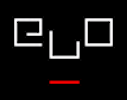Your cart is currently empty!
ELO
-
ELC 4: Call for Submissions
Call for Submissions Electronic Literature Collection Volume 4 Accepting submissions: 17 December 2019 – 15 March 2020 pdf version The Electronic Literature Organization (ELO) seeks submissions for Volume 4 of… Read more.
·
-
Remembering Randy Adams
The Electronic Literature Organization wishes to commemorate the life of Canadian e-lit artist and writer Randy Adams (aka runran) who passed away on April 25, 2014. To best honor his… Read more.
·
-
The Sweet Old Etcetera
by Alison Clifford. The Sweet Old Etcetera is an interactive web project based on the poetry of E. E. Cummings. E. E. Cummings’ poetry is highly visual, playful and experimental.… Read more.
-
The Aesthetics of Net Literature
In The Aesthetics of Net Literature: Writing, Reading and Playing in Programmable Media editors Peter Gendolla and Jörgen Schäfer have put together a broad table of contents — including contributions… Read more.
-
Grand Text Auto — Exhibition, Symposium, and Performance
October 4th and 5th, at UC Irvine, an exhibition opening, symposium, and performance features the work of ELO Vice-Presidents Noah Wardrip-Fruin and Nick Montfort and ELO Co-Founder Scott Rettberg. EXHIBITION:… Read more.
-
Purple Blurb, a New Digital Reading Series at MIT
This Fall, Purple Blurb, a new reading series for digital writing, is beginning in Cambridge at the Massachusetts Institute of Technology. The series is sponsored by the MIT programs in… Read more.
·
-
Volume 1 of the Collection in The Philadelphia Inquirer
The Electronic Literature Collection, volume one is the topic of Katie Haegele’s column in the Philadelphia Inquirer this week. She writes: But wouldn’t it be nice to get our arms… Read more.
-
Second Person: Role-Playing and Story in Games and Playable Media
MIT Press has just published Second Person: Role-Playing and Story in Games and Playable Media. Edited by Pat Harrigan and ELO VP Noah Wardrip-Fruin, the book includes contributions by ELO… Read more.
-
Platform Studies Series Coming from MIT Press
Ian Bogost & Nick Montfort have announced a new MIT Press series, Platform Studies Investigating the relationships between the hardware and software design of computing systems and the creative works… Read more.
-
Brown U. Electronic Writing Fellowship
Brown University’s Literary Arts department offers what may be the only MFA in writing for digital media. Brown also offers a generous fellowship specifically in this area, which provides two… Read more.

